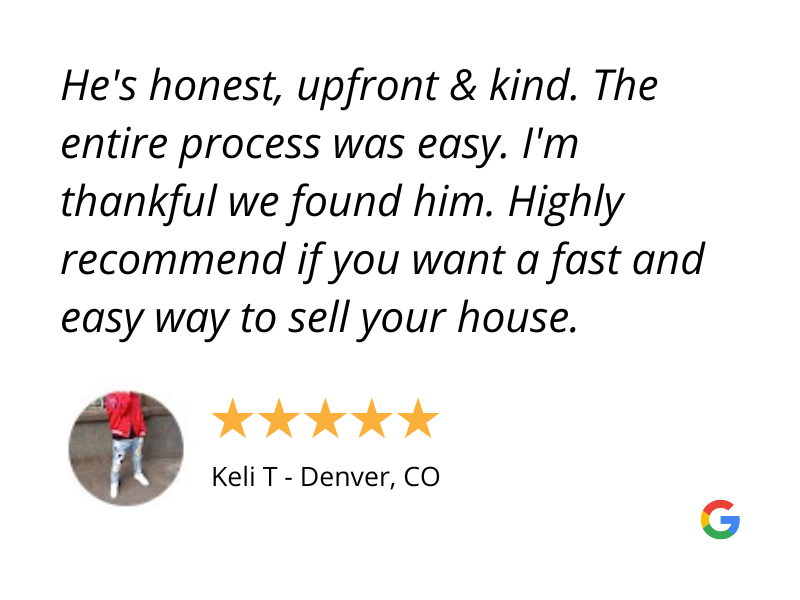Can You Sell a House With an Encroachment?

Selling a home can be quite a convoluted process, considering that there are many factors you need to consider. Generally, you need to ensure that your home meets the buyer(s) standard of room size, square footage, and yard space. Nevertheless, other factors adjacent to your house can directly influence your ability to sell it.
During the sale of a home, a home inspection is ordered by buyers to professionally assess the condition of the living area and the main structure. Nevertheless, surveying the land on which the house is on and the legally mandated property lines can help you, and the buyer knows what type of property you intend to sell to them.
The simple fact is the house you intend to sell might have property encroachments that can affect your ability to sell it. There are times when structures extend beyond the borders of their property lines into adjacent areas. While these encroachments have no physical connection, they can affect some parts of a sale contract.
Can you sell a house with an encroachment? Yes, you can, although there are some conditions. Before we get into that, we need to define encroachment.
Table of Contents
What Is an Encroachment?
An encroachment is an intrusion from one property’s legal lines across an adjacent property’s legal lines. You should note that encroachment is legally defined differently from trespassing as it concentrates on neighboring property ownership instead of property use.
An example of an encroachment is a home addition, shed, or tree going beyond your property line into the neighboring property line.
Since property lines aren’t as rigid in real life as on property line maps, encroachment can happen unintentionally and easily.
This can sometimes lead to financial and legal burdens not anticipated by the prospective buyer or the current property holder. When a significant encroachment happens, it could render the house unmarketable or unsaleable.
An encroachment can be a nuisance; however, most importantly, it can be a source of confusion concerning the actual boundary of a plot of land.
An encroachment can also infringe on any future renovations, prove to be an eyesore, or enable unwanted intrusions. Furthermore, it can strain relations between neighbors.

How Can Encroachment Affect the Sale Process?
A major concern you might have when trying to sell a house with an encroachment is how it will affect the buyer’s insurance costs and liability. For instance, if the adjoining property has an orange tree with branches in your backyard, you might be liable when a limb falls.
Furthermore, an encroachment can affect your ability to sell your property. While you might not mind that your neighbor’s tool shed extends into your property, the prospective owner might not be as amenable to the fact.
Furthermore, a house with an encroachment means the new owner will have to incur increased insurance costs for both the encroaching structure and the property title.
The financial repercussions associated with encroachments can lower the house’s market appeal. These additional insurance costs and your selling price can discourage buyers from even considering your house. These factors can cause prospective buyers to reduce their purchase offer or even rescind it.
How to Identify a House With Encroachment
The first step to discovering if your house has an encroachment is to access the public records. Your first stop should be the assessor’s office in the county, as it will have copies of land surveys or property deeds. These documents will determine plot size, boundary lines, and acreage. They provide a starting point, particularly if the documents are updated.
Even if you have existing documentation, ordering a land survey can be the best way to get confirmation. A survey can provide clear knowledge of where the boundaries are. The survey can also identify easements, defined as limited use encroachment of convenience between two properties.
Easements and encroachments are typically mutually agreed upon by neighbors. However, these verbal only agreements can result in legal conflicts for a prospective buyer, especially when insurance costs and fair market price are considered.
Having legally defined boundary lines can help resolve any issues that may arise about property rights and ownership. It also helps clarify the saleable property.
Who Handles the Encroachment Process?
The process of resolving the encroachment will depend on how severe it is. Sometimes a simple conversation can rectify things such as an overextended fence or overgrown garden. However, a property with a major encroachment is much more complicated and can involve legal proceedings such as civil suits and property reassessment.
The leading authority in the encroachment resolving process for real estate is the property surveyor. Considering that a land survey can be essential in determining the property’s boundaries, you will require a professional.
Getting a stake survey can help delineate your property’s boundaries and how severe the encroachment is. Other experts will need to weigh in if the buyer still wants to continue the process. For instance, a title insurance agent and a mortgage lender will need to weigh in as they can influence the buyer’s liability coverage and financing.
The buyer will also need a real estate lawyer to properly draft property agreements. A real estate lawyer might also need to handle negotiations or conflicts that may arise due to the encroachment.
Steps Required When Selling a House With an Encroachment
According to Colorado’s property law, most of the burden when property encroachments are concerned lies with the property seller. You are legally required to disclose every encroachment issue to prospective buyers and even get a stake survey to confirm the encroachments. It is essential to provide accurate legal boundaries, as it can affect the prospective buyer’s title insurance costs and mortgage eligibility.
The prospective buyer can then choose to ask you to correct the encroachment before finalizing the sale. Allowing the encroachment means that the buyer is willing to accept the associated costs like additional property taxes or liability insurance on the encroachment. It can also mean less renovation or adjustment and an understanding with the neighbor concerning the encroachment.
If the buyer is not interested in taking on the encroachment issue and its associated implications, then you as the seller must correct it. This means you must contact your neighbors to demolish or relocate the encroaching feature. Not being able to rectify this and any neighbor disputes satisfactorily means the home buyer is released from any obligation to continue negotiations for the residential real estate.
How to Fix an Encroachment
The simplest way to sort out a house with an encroachment issue is to discuss it with your neighbor and find a solution. You can seamlessly correct a basic structural encroachment such as a fence, tree, or even a garden by removing or moving the protruding section. Add-ons and fixed structures are a lot more difficult to resolve; however, this structural encroachment can be corrected using a calm and civil discussion.
If the process to reassert your property line isn’t amenable or possible, it might be right to enter into a financial agreement in lieu of the encroached land. For instance, the party doing the encroachment can buy or rent that particular section of land from the property owner. This enables both parties to participate in the associated financial responsibilities of the property.
Nevertheless, there are times when both parties cannot agree—an unbiased third party might be required to help mediate the situation and settle the boundary dispute. This negotiator can help create terms that are beneficial to both sides without requiring any legal challenges. The last thing anyone wants or should yearn for is a time-consuming and costly estate trial that can potentially create animosity.
Removing the Encroachment
If the buyer requires, you will need to clear all the encroachments before proceeding with the property sale. This can be quite a tedious and lengthy process; however, as the seller, there are some steps you can take to remedy the situation. Remedying the situation can be particularly beneficial as it can help you facilitate the sale.
You can legally remove the infringing encroachment when you get a staked boundary property survey. To make this process easy, you should let the offending neighbor know before you begin demolition or removal. In fact, Colorado legally mandates you inform before removing an encroachment.
As the property seller, you have the right to request your neighbor relocate or raze the encroachment. Hopefully, your neighbor complies with the request because the law backs it. And if everything is settled and you want to sell fast, you can always look for a Denver home buying company.
Here at WeBuyHousesInDenver.org, we buy homes throughout the entirety of Colorado, from Pueblo to Colorado Springs and beyond.
Best Solution Sell Your House Fast For Cash



I NEED TO SELL MY HOUSE FAST IN COLORADO
If you need to sell quickly and don’t want to spend any money, we are the best home-buying company for you.
WeBuyHousesInDenver.org is a Colorado cash buyer. We buy houses in Colorado AS-IS. We buy direct because this saves time and money making selling your home quick and easy.
Get your ALL CASH OFFER today by filling out our online form. Don’t miss out!
- Sell My House Fast Denver
- We Buy Houses
- Sell Your House Fast Colorado Springs, CO
- Sell My Home Fast Aurora, CO
- Sell Your Home Fast Fort Collins, CO
- Sell My House Lakewood, CO
- Sell Your House Thornton, CO
- Sell House Fast Arvada, CO
- Sell Home Fast Westminster, CO
- Sell My House Pueblo, CO
- Sell My House Longmont, CO
- Sell My House Grand Junction, CO
- Sell House Fast Castle Rock, CO
- Sell Home Fast Centennial, CO
- Cash Home Buyer Fast Golden, CO
- Cash House Buyer Fast Greeley, CO
- Cash Buyer Highlands, CO
- We Buy Houses Brighton, CO
- We Buy Homes Durango, CO
- Sell My House for Cash Erie, CO
- We Buy Houses Fast Lafayette, CO
- Colorado Cash Buyer Montrose, CO
- Colorado Cash Buyers Parker, CO
- We Buy Real Estate Pueblo West, CO
- We Buy Property Windsor, CO
- Sell Fast For Cash Boulder, CO
- Sell Fast Broomfield, CO
- Home Buying Company Littleton, CO
- Colorado House Buyers Loveland, CO
- Sell My House For Cash Wheatridge, CO
- Sell My House Quick Longmont, CO
- Sell My Home Fast Denver CO
- Sell My House Fast Colorado
